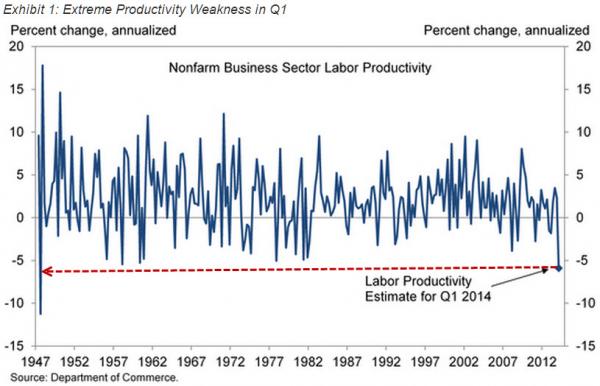The official measure of Q1 productivity growth currently looks likely to be revised down to almost -6% (annualized) – the worst in almost 70 years. As Goldman points out, even on a longer-term basis, the 4-, 8-, and 12-quarter trends are all in a 0.2%-0.6% range when the Q1 estimates are included, dramatically below consensus 2% estimates of the long-term trend. While Goldman notes productivity is a very noisy series, because it is calculated as the difference between noisy GDP numbers and noisy hours worked numbers; if these numbers are an accurate representation of the long-term trend, the implications for the long-term growth in US living standards would be very negative.
Weather?

Â
Of course, it wouldn’t be Jan Hatzius if Goldman didn’t end on an optimistic note…
There are good reasons to expect further improvement in productivity growth over the next few years. In particular, stronger business investment is likely to boost the growth rate of the capital stock and therefore the contribution of capital deepening to productivity growth.
Whether this will be enough to boost the productivity trends over the cycle as a whole to our longer-term estimate of 2% or a slightly lower number is admittedly less clear.

